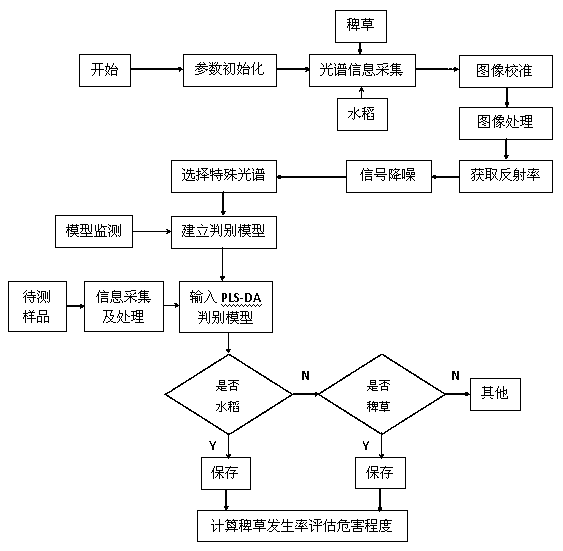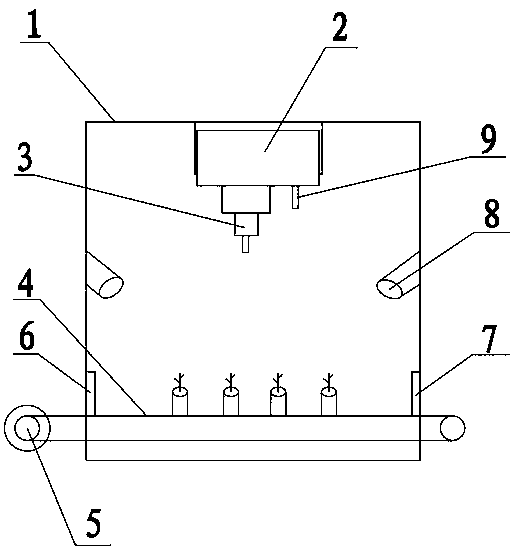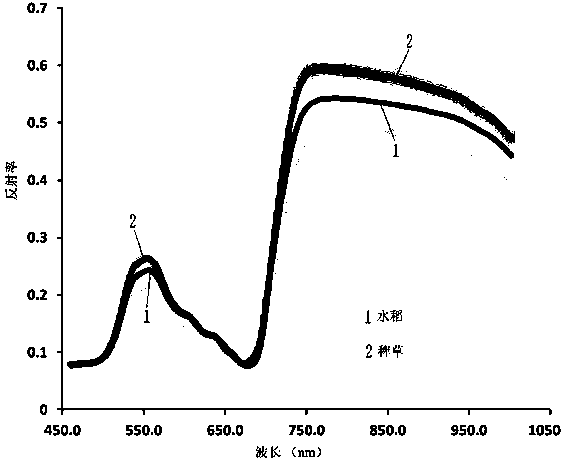Method for identifying barnyard grass of rice field by utilizing a hyperspectral imaging technology
A technology of hyperspectral imaging and barnyardgrass, which is applied in the field of identification and early warning of malignant weeds in rice fields, can solve the problems of data redundancy, calculation reduction, and large data volume
- Summary
- Abstract
- Description
- Claims
- Application Information
AI Technical Summary
Problems solved by technology
Method used
Image
Examples
Embodiment 1
[0028] Example 1: A method for identifying barnyardgrass in paddy fields using hyperspectral imaging technology, such as figure 1 shown.
[0029] S1. Plant rice and barnyardgrass germplasm resources, covering all barnyardgrass and rice varieties in the measured rice area.
[0030] S2. Select rice sample plants and barnyardgrass sample plants to collect spectral data through the hyperspectral imaging system, and the spectral information collection periods of rice and barnyard grass leaves are 2.5-3.5 leaf stage and 3.5-4.5 leaf stage respectively.
[0031] S3. with the spectral data in the step S2 as model input variable, adopt computer software to carry out image calibration, image processing, obtain the average reflectivity of whole leaf, after signal denoising, utilize spectral difference to set up the least square method discriminant analysis model, The image calibration uses the calibrated image = (original image - full dark processing) / (full light transmission processi...
PUM
 Login to View More
Login to View More Abstract
Description
Claims
Application Information
 Login to View More
Login to View More - R&D
- Intellectual Property
- Life Sciences
- Materials
- Tech Scout
- Unparalleled Data Quality
- Higher Quality Content
- 60% Fewer Hallucinations
Browse by: Latest US Patents, China's latest patents, Technical Efficacy Thesaurus, Application Domain, Technology Topic, Popular Technical Reports.
© 2025 PatSnap. All rights reserved.Legal|Privacy policy|Modern Slavery Act Transparency Statement|Sitemap|About US| Contact US: help@patsnap.com



